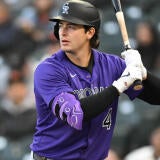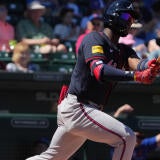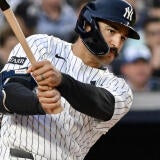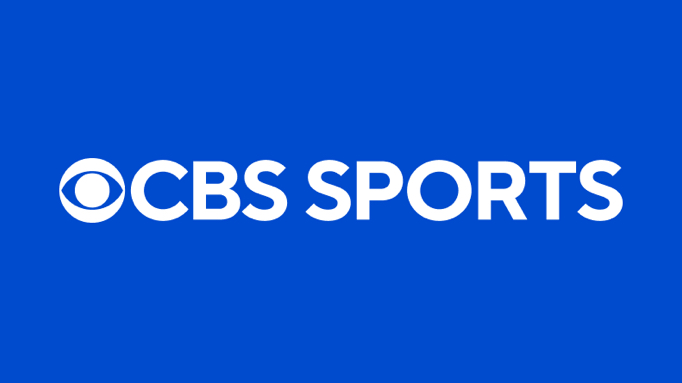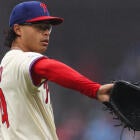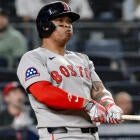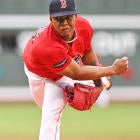2025 Fantasy Baseball Mock Draft 15-team Rotisserie (Roto): Boring is best in deeper leagues
The deeper the league is, the more you have to lose with every pick
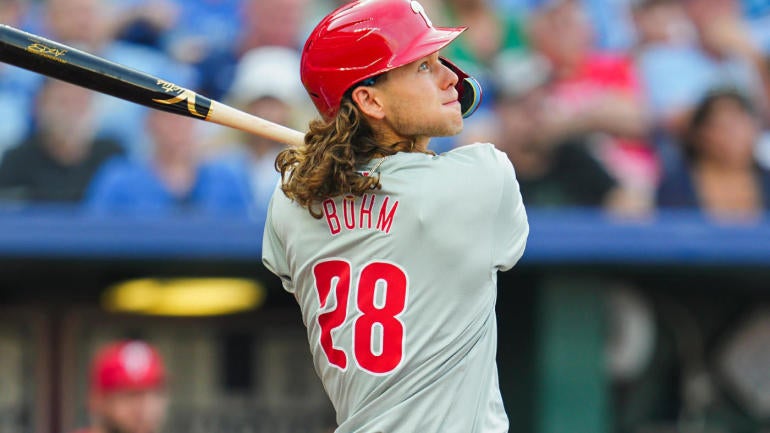
The 15-team Rotisserie league, which is popular in analyst and high-stakes circles but not so much among the broader Fantasy Baseball-playing populace, occupies a weird middle space on the shallowness spectrum. It's not so deep that you can eschew upside and expect to win. It's not shallow that you can load up on lottery tickets in the late rounds and expect to fill in the gaps off the waiver wire later.
So what's the proper approach? I'll admit I've struggled to find it. I had some initial success going the lottery ticket route, as I do in shallower leagues of 12 teams or fewer, but more recently, bad luck -- or perhaps just more ordinary luck -- has slapped me into submission. While these 15-team Roto leagues do have a functioning waiver wire (unlike, say, AL- and NL-only), the competition for the few available morsels is so fierce that you end up pouring truckloads of FAAB dollars into players you don't even believe in just because there's no other recourse. It's a wild goose chase.
No, you want to get it right the first time, meaning in the draft. You want to go boring.
Or maybe you don't, but I do. After years of doing the opposite, rounding out my roster with theoretical upside plays that don't address specific needs but will hopefully just explode (looking at you, Jackson Holliday), I have to try it. I have to leave the prospect pursuits for shallower leagues. I have to be practical.
So that's what I aimed to do in this mock, which I considered to be a warmup for TGFBI and Tout Wars in the coming weeks. Beginning with my first pick, Francisco Lindor at 13th overall, I tried to stick to safe, projectable players that would reliably meet my positional and categorical needs.
First came the run of Kyle Schwarber, Anthony Santander and Christian Walker in Rounds 4-6, none of whom make my heart go pitter-patter but all of whom are constants, filling out vital categories and giving me a clear path forward. Then when I was falling behind in batting average (as one does after drafting Schwarber, Santander, and Walker), I went for Alec Bohm in Round 11 and Luis Arraez in Round 13. In previous years, I might have opted for Carlos Correa and Matt Shaw instead, hoping each would deliver on his best-case scenario, but too often they'd do what volatile players so often do and leave me with a gaping hole in my lineup. When I was trailing in stolen bases, I opted for Jacob Young, a flawed player with clear limits to his ceiling but one who figures to play a lot and run a lot.
You get the idea. So reformed was my thinking that I'd say my most celebratory moment was picking Jake Cronenworth for my middle infield spot in Round 20. No, he's not going to inspire ballads, but he's going to accumulate. The man wasn't even playing his best ball last year, and he had 83 RBI.
Might I have gone too far the other way? I know that eschewing upside for security can lead to victory in an AL- or NL-only league -- it's my general approach to those formats, in fact -- but a 15-teamer isn't quite that deep.
Maybe, maybe not. I don't really know, but I know I have to try something different in these leagues this year. The 12-team approach just isn't working in them.
Here's who all took part in this draft.
1) Doc Eisenhauer, Scout the Statline (@DocHollidayDyna)
2) Chris Rossi, SportsEthos
3) Neil Mills, lucky reader who got to join in
4) B_Don, Razzball (@RazzBDon)
5) Nick Fox, NBC Sports (@CT_FOX)
6) Frank Stampfl, CBS Sports (@Roto_Frank)
7) Anthony Kates, SportsEthos (@akfantasybb)
8) Chris Mitchell, FantasyData (@CJMitch73)
9) Chris Towers, CBS Sports (@CTowersCBS)
10) Nick Francis, Nick's Picks (@nicksMLBpicks)
11) Michael Polidoro, The Can-Am Super Show (@CanAmSuperShow)
12) Anthony Tucker, Pitcher List (@AnthonyTucker81)
13) Scott White, CBS Sports (@CBSScottWhite)
14) Jeremy Heist, Pitcher List (@heistjm)
15) Zach Steinhorn, Steinhorn's Universe (@zachsteinhorn)
Just a few quick observations before you pore over the results:
- I've been saying for months now that Jackson Merrill shouldn't go so far behind Jackson Chourio in drafts, and well, he didn't in this one, going exactly one spot later (19th overall). He went ahead of Paul Skenes, Jazz Chisholm, Jarren Duran and Trea Turner, none of which I can endorse, but I'm happy to see him get more love.
- Wyatt Langford was selected with the first pick of Round 3, 31st overall, but that's more a reflection of us drafting with Doc Eisenhauer, who clearly can't live without him, than some sort of industry-wide trend. Another popular breakout pick who went earlier than we're used to seeing was Lawrence Butler at Pick 58. I like both players, but these are exactly the sort of picks I'm trying to avoid in leagues of this depth.
- Normally, 15-team Roto leagues drive up the cost of closers, as happened with Emmanuel Clase at Pick 38. They eventually run out, after all, and with so many teams needing to address the saves category, the urgency is palpable. Apart from Clase, though, it didn't so much happen in this draft, with most closers being discounted by 20-40 picks compared to the typical 15-team draft. I've never had the luxury of taking two fairly high-end types in a league of this size, but the discount allowed me to do so with Raisel Iglesias in Round 8 and Robert Suarez in Round 9. And I have to say, it was nice not to have to worry about it anymore. Normally, I'm having to dump several picks into part-time saves sources to have any hope of competing in the category.
![[object Object] Logo](https://sportshub.cbsistatic.com/i/2020/04/22/e9ceb731-8b3f-4c60-98fe-090ab66a2997/screen-shot-2020-04-22-at-11-04-56-am.png)


